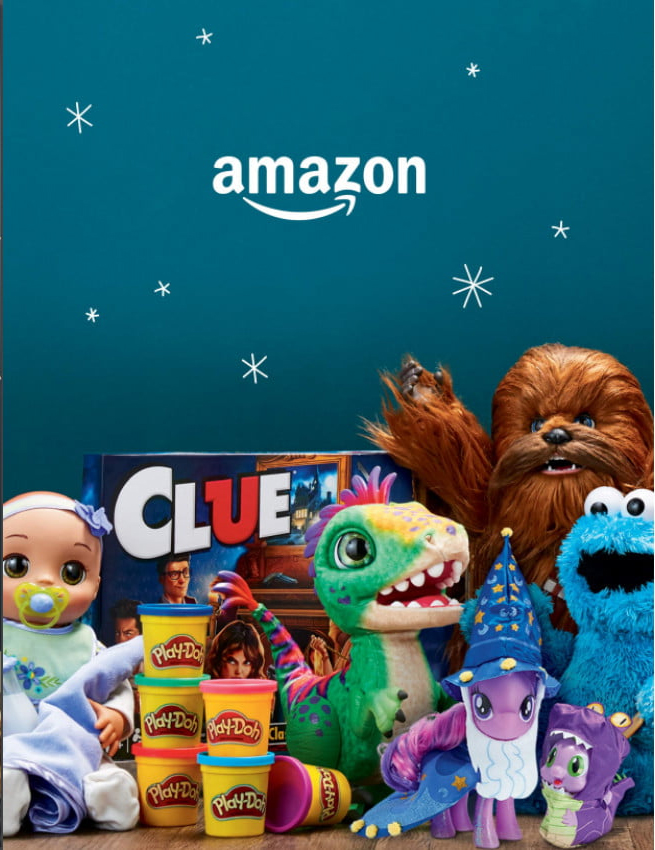Dear Santa,
I want a highly personalized and relevant marketing experience this holiday season. Please skip the fruitcake …. AND the marketing emails.
Sincerely,
A modern retail customer
 If we could pen a letter to the imaginary marketing Santa in the sky, it might go something like that. And that is exactly why retail brands are amping up their cataloging strategy this time of year. As Cara Salpini explains in Retail Dive, it’s all about the storytelling that can happen when images and words on paper end up in your customer’s hands.
If we could pen a letter to the imaginary marketing Santa in the sky, it might go something like that. And that is exactly why retail brands are amping up their cataloging strategy this time of year. As Cara Salpini explains in Retail Dive, it’s all about the storytelling that can happen when images and words on paper end up in your customer’s hands.
“A fire’s blazing in the background, but it doesn’t look quite as magical as the one in the catalog, which also features a few festive blankets, some cozy sweaters and two people looking like they’ve never been happier than with the cups of cocoa they’re gingerly sipping,” Salpini writes. “And suddenly, you realize you need that sweater and your sister would love one of those blankets.”
While you might not get that reaction for everyone you mail to, catalogs in the right hands can make magic.
“It’s the type of paper, it’s the photography, it’s the layout, it’s the words I’m gonna put over here, the visuals, the size — all of those elements,” Greg Portell of consumer and retail consultants A.T. Kearney told Retail Dive. He recognizes the expense of printing and mailing paper catalogs, and advises brands to understand their mailing list carefully. Cost aside, there’s a very good reason why brands are finding success in printed marketing nowadays.
“Thanks to email marketing, shoppers get inundated daily with emails from brands they like, brands they love and brands they shopped at once for their mother-in-law and never intend to purchase from again,” Salpini explains. “It’s not that shoppers don’t enjoy getting relevant emails from their favorite brands or retailers — and some have had great success with the channel — but many marketing emails go ignored, according to a study by Yes Marketing, which found that over half (55%) of shoppers ignore them because of inbox overload, half because they’re irrelevant and others because they either don’t have interesting content, or don’t include discounts or free shipping.”
A print catalog, on the other hand, is much harder to ignore. The irony, of course, is that emails now are facing the same problem print catalogs used to have – we all just get too many. When dozens of catalogs used to hit the mailbox all at once, there was a lot of waste. Better use of customer data and more strategic mailing schedules now means that fewer catalogs are delivered, but they are delivered at the right time to the right people. This year’s toy catalogs, for example, are all about fun, games and serious data.
“As a result, catalogs are in some ways more personal than digital marketing methods now — and that personal touch could help retailers cut through some of the deal-based noise over the holidays,” Salpini notes. “It’s a problem catalogs used to have, but the pendulum has swung back in the other direction over time.”
Portell agrees.
“What you’re trying to get when you have catalog marketing is a reason to pull consumers into your product selection — and glossy paper tends to be able to do that in a way that an email that’s one of 100 doesn’t really do.”
With discretionary spending estimated to be up by more than 4% this year, those brands are tapping into an engaged audience that is ready and willing to buy – and aren’t necessarily focused on pricing, Black Friday offers or free shipping, the usual come-ons from emails.
“The biggest shift in our catalog strategy has been creating them with the goal of providing our customers a sourcebook of ideas rather than a pure selling vehicle,” said Felix Carbullido, CMO of Williams-Sonoma and their gorgeous holiday catalog. “Visiting us online and in-store are great channels to get detailed information to inform a purchase decision; but the catalogs are a great medium for giving our customers’ inspiration and ideas.”
In many ways, this return to a “simpler” way of communicating with our customers is a welcome relief. And it’s backed by the incredible power of customer data and high tech printing capabilities. So consider what you’re offering your own customers this season. If you’re bombarding them with emails that go unread, you may need to rethink your engagement strategy before you end up with coal instead of sales.
